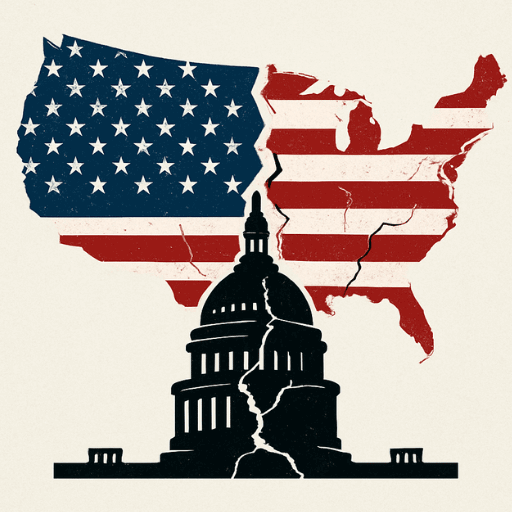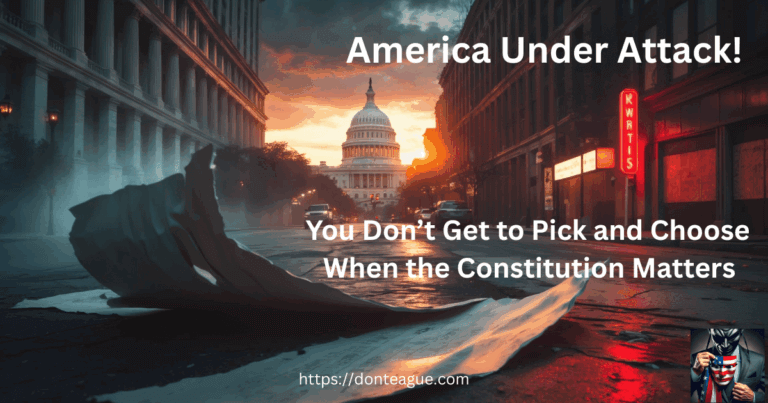Shadows of the Shadow Docket: Hypothetical Futures After Noem v. Vasquez Perdomo
In the wake of the Supreme Court’s shadow docket decision in Noem v. Vasquez Perdomo on September 8, 2025, many Americans are left with a gnawing unease. Justice Sonia Sotomayor’s dissent captured this sentiment starkly: “We should not have to live in a country where the Government can seize anyone who looks Latino, speaks Spanish, and appears to work a low-wage job.” Her words echo a broader anxiety, that the America of equal protection under the law, where suspicion must be individualized and not probabilistic, is slipping away. This temporary ruling, which paused a lower court’s block on aggressive ICE operations in Los Angeles, feels like a crack in the constitutional foundation. It’s a country that, as one observer put it, “isn’t the America I knew.”
What if this decision isn’t just a blip but a harbinger? Below, I’ll explore hypothetical predictions for the months and years ahead, grounded in Sotomayor’s critique of racial profiling, due process erosion, and the dangers of unchecked executive power. These are speculative scenarios, drawing from legal precedents, historical patterns in immigration enforcement, and the ruling’s immediate ripple effects. They aim to provoke thought on where we might be headed if the conservative majority’s approach solidifies.
Prediction 1: Nationwide Expansion of “Probability-Based Policing”
Sotomayor’s dissent warned against “probability-based policing,” where factors like ethnicity, accent, location, and occupation become proxies for suspicion. The majority’s stay, justified by Justice Kavanaugh’s concurrence as allowing brief stops in “high-immigration areas,” could embolden the Trump administration to scale up operations beyond Los Angeles.
- Short-Term (Next 6–12 Months): ICE raids intensify in sanctuary cities like Chicago, New York, and San Francisco. Hypothetically, we see “Operation At Large 2.0” rolling out in 2026, with DHS Secretary Kristi Noem announcing quotas for deportations tied to “hotspot” patrols at day-labor sites, public transit, and low-wage workplaces. U.S. citizens of Latino descent report a surge in detentions, perhaps 20–30% of stops involving citizens, based on patterns from the LA raids documented in the lower court record. Apps and hotlines for reporting “suspicious activity” proliferate, crowdsourcing tips that feed into AI-driven targeting systems, further blurring lines between enforcement and surveillance.
- Long-Term (2–5 Years): If the full case reaches SCOTUS and the majority upholds this framework, it could redefine Terry v. Ohio (1968) stops for immigration contexts. Imagine routine checkpoints at airports, bus stations, and even grocery stores in border states, where “totality of circumstances” includes biometric scans or accent-detection software. Sotomayor’s fear of a “second-class citizenship” becomes reality: Latino Americans carry digital IDs or apps proving status, much like post-9/11 measures for Muslim communities. Civil liberties groups file class-action suits, but shadow docket stays delay relief, leading to a patchwork of local ordinances clashing with federal power.
This trajectory risks normalizing what Sotomayor called “flagrantly unlawful conduct,” eroding trust in law enforcement and fostering a surveillance state where innocence requires constant proof.
Prediction 2: Chilling Effects on Daily Life and Economic Participation
The dissent highlighted real harms from the LA raids: families avoiding public spaces, workers skipping jobs, and children fearing school. If unchecked, these could cascade into broader societal withdrawal, disproportionately hitting immigrant-heavy communities.
- Short-Term: In hypothetical 2026 budget debates, Congress ties federal funding to states’ cooperation with ICE, pressuring blue states to ease sanctuary policies. Low-wage sectors like agriculture, construction, and hospitality see labor shortages as undocumented workers go underground and citizens self-censor, speaking less Spanish in public or avoiding certain jobs. Economic reports project a 5–10% dip in GDP contributions from Latino workers in affected areas, echoing Sotomayor’s note on “manual labor” stigma.
- Long-Term: By 2030, we might witness “enclave economies,” where Latino neighborhoods become isolated bubbles with private security and community verification systems to shield residents from patrols. Education suffers as schools report higher absenteeism; universities in California and Texas see enrollment drops among DACA recipients and citizens wary of campus raids. Sotomayor’s warning of “panic and fear” manifests in mental health crises, with studies linking ICE visibility to increased anxiety disorders. On the flip side, private industries boom, ID verification startups and “citizen-proof” apps rake in billions, commodifying due process.
This isn’t just about immigration; it’s a rewrite of the social contract, where Sotomayor’s “indignities” become everyday realities, stifling the American dream for millions.
Prediction 3: Legal Backlash and Constitutional Reckoning
Sotomayor lambasted the shadow docket for its opacity, arguing it circumvents “the ordinary appellate process.” Her call for transparency could spark a reform movement, but it might also entrench divisions.
- Short-Term: Progressive lawmakers introduce the “Due Process Restoration Act” in 2026, aiming to limit shadow docket use and mandate full opinions for emergency stays. Hypothetically, it passes the House but stalls in the Senate, leading to state-level experiments, like California’s proposed “Fourth Amendment Shield” banning ethnicity-based stops. Meanwhile, ACLU-led challenges multiply, with amicus briefs from tech firms decrying AI profiling tools.
- Long-Term: A 2028 SCOTUS case tests the limits, perhaps involving National Guard deployments during protests (as hinted in the LA context). If the liberal justices gain ground, say, through retirements or a Democratic president, the Court could overrule aspects of Brignoni-Ponce (1975), reinforcing Sotomayor’s individualized suspicion standard. But in a darker scenario, the ruling cements “national security exceptions,” expanding to other groups (e.g., based on religion or politics). Habeas corpus petitions skyrocket, overwhelming federal courts and prompting calls for immigration-specific tribunals, echoing Sotomayor’s unspoken nod to due process voids.
Ultimately, this could fracture the Court further, with dissents like hers becoming rallying cries for constitutional amendments or even convention calls.
A Call to Vigilance
These predictions paint a dystopian yet plausible path: an America where ICE patrols evoke historical injustices like Japanese internment or Jim Crow stops, all under the guise of border security. Sotomayor’s dissent isn’t hyperbole, it’s a roadmap of risks if we ignore the “mountain of evidence” from the lower courts. Yet history shows resilience; the ruling is temporary, and public outcry (from LA protests to viral citizen stories) could force course corrections.
If this feels like a nation adrift from its ideals, it’s a reminder to engage, vote, advocate, and hold power accountable. The America we knew isn’t gone; it demands defense. What do you think the future holds? Share in the comments.
This post is speculative and for discussion purposes. For legal advice, consult a professional.






